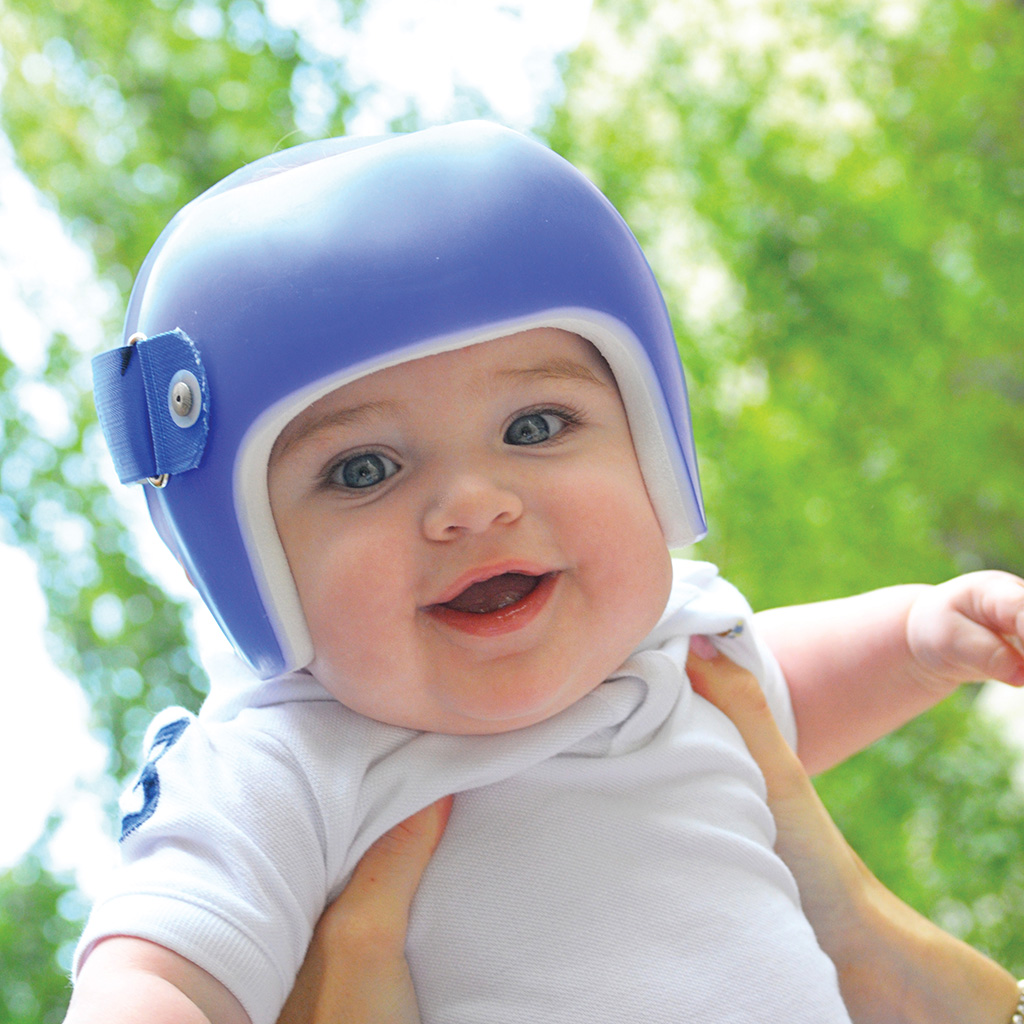#109-1960 Springfield Road Kelowna, BC V1Y 5V7
9:00am-4:00pm (Mon-Thurs)
9:00am-4:00pm (Fri)
Phone Number:
(778) 478-7014
Toll Free:
1-888-913-7919
Positional plagiocephaly, or deformational plagiocephaly, refers to a condition where an infant’s head develops a flattened shape. It occurs due to external pressures on the soft and malleable skull of a baby, typically during the first few months of life or intrauterine positioning.
Head Shapes – Flattening:
Plagiocephaly: This type occurs when there is flattening on one side of the head, resulting in an asymmetrical shape. It may be caused by factors such as prolonged pressure on one area of the skull when the baby spends excessive time lying in the same position or consistently turns their head to one side while sleeping. Intrauterine position especially when twins compete for room in the womb may cause deformation.
Brachycephaly: Brachycephaly involves a flattening of the back of the head, leading to a wider appearance. It can be caused by extended periods of time spent lying on the back, as recommended for safe sleep practices, or by using devices that restrict movement, such as car seats or baby swings.
Torticollis: Torticollis is a condition that is characterized by the tightening of one side of the neck, causing the child’s head to turn in one direction and tilt in the opposite direction. This condition can lead to the flattening of one side of the skull and potential difficulties in motor skill development.
Plagiocephaly or Brachycephaly is considered a relatively common condition and is typically benign. It does not cause developmental or neurological problems in most cases. However, it is important to address the condition to prevent it from worsening and to promote a more symmetrical head shape. Treatment options may include repositioning techniques, supervised tummy time, physical therapy, and, in some cases, specialized helmets called Cranial Remolding Orthoses) to help reshape the head.
Craniosynostosis is a condition that occurs when one or more of the fibrous joints between the bones in a baby’s skull (known as cranial sutures) fuse prematurely, before the brain has fully developed. As the brain continues to grow, it causes the head to take on a misshapen appearance. This condition is present at birth.
Most children are detected very early and referred to a neurosurgeon at BC Children’s Hospital. Post-surgery, a Cranial Remolding Orthosis is built to direct regional growth or the infants head. Ortho Design has been a longtime provider of post-surgical helmets for BC Children’s Hospital.
There are several reasons why Deformational Plagiocephaly is more common than it used to be:
Back to Sleep Campaign: The Back to Sleep Campaign, which promotes placing infants on their backs to sleep to reduce the risk of Sudden Infant Death Syndrome (SIDS), has been successful in reducing SIDS cases. However, this has also increased the occurrence of positional plagiocephaly as infants spend more time lying on their backs.
Increased Awareness: There is greater awareness among parents and healthcare professionals about Deformational Plagiocephaly, leading to more diagnoses. This increased awareness has resulted in more cases being reported and treated.
Changes in Infant Care Practices: Modern lifestyle factors, such as the use of car seats, strollers, and infant carriers, can limit the amount of time infants spend in varied head positions. This can contribute to the development of flattening of the head.
Premature Births: Premature infants have a higher risk of developing cranial deformities due to their fragile skulls and prolonged periods of immobility during their early developmental stages.
Multiple Births: The rise in multiple births (e.g., twins, triplets) has also contributed to an increase in Deformational Plagiocephaly cases. Multiple births often result in infants spending more time in cramped positions, which can lead to cranial asymmetry.

Cranial remolding treatment redirects cranial growth to achieve greater head symmetry. A corrective orthosis produces excellent results and has no known head growth side effects. The sooner treatment starts, optimally at 5 to 6 months of age, the better for your baby and the more effective the treatment!
Deformational Plagiocephaly or asymmetrical head shapes in infants can be caused by various factors, including both positional and non-positional factors. Click here for more information...
Infant cranial orthotics is a common
treatment for Deformational Plagiocephaly
head shapes in infants. Click here for more information ...